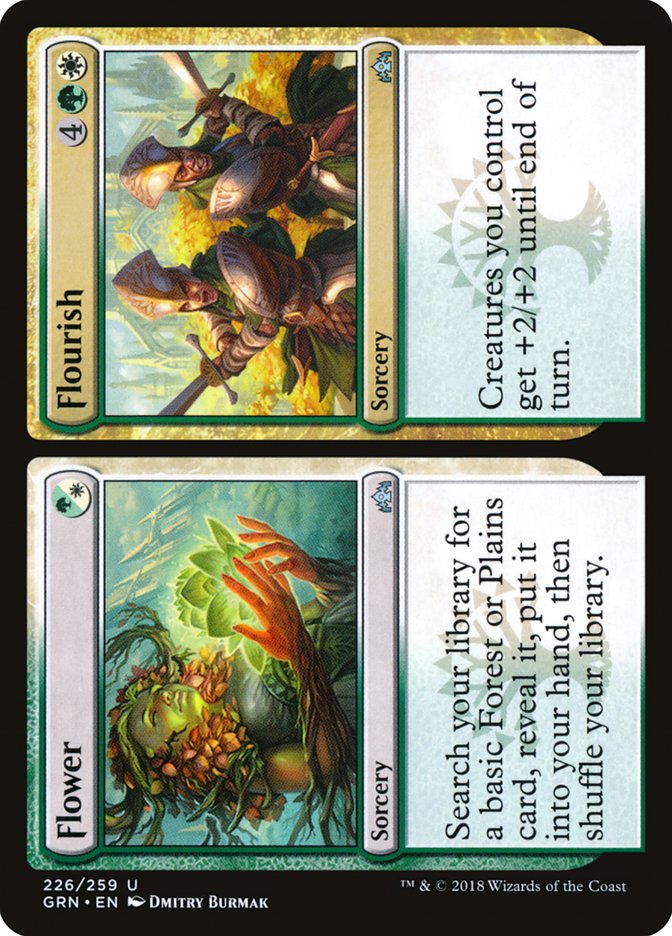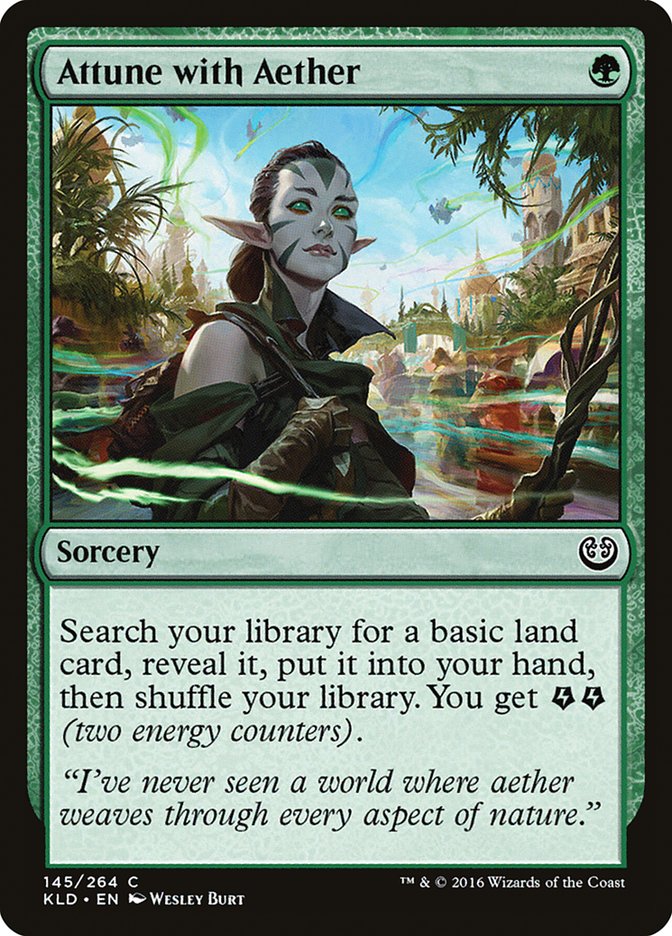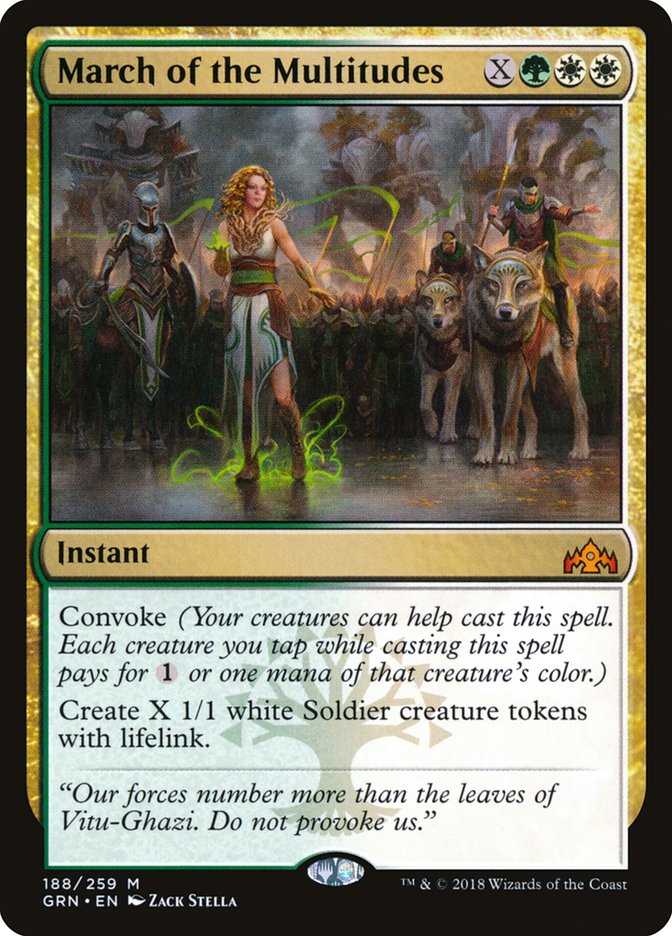I know it sounds like clickbait, but I’m serious. Selesnya is a cut above
the other guilds. The full card list for Guilds of Ravnica was
revealed last week, and I’m not one to jump the gun and start blindly
testing decks without a complete picture of the set, so the VS Live!
episode that I recorded with Todd Stevens last week was the first set of
games I played of the new Standard format.
**Aside for flagrant cross-promotion:
If you haven’t caught an episode of VS Live! yet you’re missing out
because they’ve been an absolute blast, and it’s only going to get
better from here as we work out the kinks and get more comfortable with
the format. The first third of my episode with Todd Stevens can be
found
here
with the rest to be posted later this week. But to catch the action
live you’ll have to tune in to twitch.tv/scgtour on Tuesdays and
Thursdays at 1
:00
pm Eastern time.**End Aside
As exciting as it is to finally see a bunch of sweet new cards in action,
it’s also bittersweet because inevitably, many of those cards that are
brimming with promise when they’re revealed fail to live up to
expectations. Some cards simply aren’t as powerful as they read on paper
(cough…Savage Knuckleblade…cough) while others don’t have the proper
support to find a suitable home. EIther way, a lot cards get left behind
when the true powerhouses are revealed.
In that video, the two guilds that were most impressive were Boros and
Selesnya and while I was going through my normal post-match analysis, it
became clear that while both guilds are replete with powerful cards,
Selesnya has something that Boros, along with the other three guilds, do
not.
This is supposed to be the place where I reveal the marquee mythic rare
that pushes Selesnya over the top. Is it Trostani Discordant? March of the
Multitudes? Maybe the non-mythic but still powerful Emmara, Soul of the
Accord?
Nope, the card that sets Selesnya apart is an overlooked uncommon:
Traverse the Ulvenwald was a format staple that was a large part of why
Emrakul, the Promised End was banned, since it allowed the decks that
wanted an Emrakul to only play a single copy and still have consistent
access to it. Attune with Aether was literally banned after about fourteen
months of near continuous dominance of Standard. It’s time for the third
act in the Lay of the Land trilogy.
Will Flower outperform its two predecessors? History says it’s unlikely.Return of the Jedi was much worse than A New Hope andThe Empire Strikes Back, and the same could be said for The Return of the King, but the importance here isn’t in
the raw power of the card itself; it’s in the fact that it’s unique to a
specific set of decks. Traverse the Ulvenwald could only be played in green
decks that put effort into enabling delirium while Attune with Aether
needed the same green base with a commitment to energy. Only these decks
had access to such a clean early mana fixer and while it may be the spells
that get all the attention, the mana in Magic has always been and will
always be, the driving force behind competitive play.
Temur Energy was an excellent shell because it had far and away the best
mana so it was able to access the widest pool of cards. This made it the
single archetype in Standard with the greatest combination of power and
flexibility, leading to its dominance across multiple seasons. On a given
weekend you could find a hole in the current lists to exploit, but
eventually the Temur decks would adapt and no other shell sported that
level of evolutionary fitness.
At varying points the best energy deck was a combo deck with Aetherworks
Marvel, a glorified midrange deck with a combo finish by splashing Felidar
Guardian, or a traditional midrange deck topping out at Glorybringer or The
Scarab God. That variety is absolutely incredible, and it all started with
Aether Hub and Attune with Aether. Mardu Vehicles was able to keep up for a
while because of Thraben Inspector enabling Spire of Industry, but once it
lost the one-drop, it wasn’t nearly as consistent, and it crumbled.
Traverse the Ulvenwald, while not as dominant, still enabled fundamentally
broken shells by allowing them to have excellent mana while effectively
lowering their mana count, since eventually that land turned into a near
Demonic Tutor. Lands in Magic are something of a necessary evil since you
want to consistently make your early land drops while still having enough
action if the game drags on.
Having a land that acts as a split card with a relevant spell, like utility
lands, creature-lands, and these Lay of the Land variants do, is the
easiest way to make your deck more consistent in terms of having the right
number of lands, and Traverse the Ulvenwald also ensured your colors were
on point.
Flower acts in the same vein as Traverse the Ulvenwald because of the
Flourish half being a powerful spell in the lategame, so long as you have
some creatures lying around to pump with it. So that’s the key here: not
necessarily committing to a mechanic, but simply having creatures. That can
be arranged.
The natural inclination here is to take advantage of the convoke mechanic
of Selesnya and build an aggressive deck with plenty of creature tokens. I
started with the following in the VS Live! episode from last Thursday:
Creatures (23)
- 4 Llanowar Elves
- 3 Shanna, Sisay's Legacy
- 3 Shalai, Voice of Plenty
- 4 Emmara, Soul of the Accord
- 4 District Guide
- 3 Venerated Loxodon
- 2 Trostani Discordant
Lands (22)
Spells (15)

This deck is capable of some very powerful openings, but it’s not blindly
aggressive, with plenty of staying power through to the lategame. District
Guide and History of Benalia are clean two-for-ones, March of the
Multitudes and Shalai, Voice of Plenty are great mana sinks, and Conclave
Tribunal is the most flexible removal spell in the format, so you’re not
cold to anything.
I stretched the mana to get the power of Llanowar Elves, even if twelve
turn 1 green sources is two or three fewer than I’m comfortable with. It’s
possible you want to move towards Legion’s Landing as an early play that
becomes another source of value and a mana sink, but Llanowar Elves is one
of the most powerful cards in Standard, and this deck has plenty of ways to
use extra mana going long so I’m getting greedy.
If you’re inclined to play Legion’s Landing, I think a heavier token-based
strategy is the way to go:
Creatures (12)
Planeswalkers (1)
Lands (22)
Spells (25)

I imagine this deck ending plenty of games with a large March of the
Multitudes on the end step followed by a Flourish or Pride of the
Conquerors, giving it more of a combo-aspect than the initial list. And if
you think that kind of play is only for the very late game, take a look at
the following curve:
- Turn 2: Either Saproling Migration or Emmara, Soul of the Accord
- Turn 3: History of Benalia
- Turn 4: March of the Multitudes (X=5) + Venerated Loxodon
Note that this also works if you start on Emmara, Soul of the Accord since
even though you’ll only cast the March for four tokens, tapping Emmara nets
the fifth. Either way you end up with five 2/2s with lifelink, two 2/2
Knight tokens ready to be pumped by History, and six other power. And the
best part is Goblin Chainwhirler never has a window to wipe out the March
tokens.
The power of these curves made me rethink March of the Multitudes. With the
diminishing returns on convoke and the power of Venerated Loxodon and
Conclave Tribunal, it seemed like the mythic would be reduced to a
singleton, if it made the deck at all. But the fact that the tokens March
of the Multitudes makes feed your other convoke cards (including additional
copies of itself) makes it play out much more smoothly than its cost would
suggest.
I was immediately reminded of a similarly costed card that started its life
as a singleton but grew to a dominant force because early copies, even
those cast for small values of X, would snowball into later ones. That card
is Sphinx’s Revelation.
Warning: objects in image are more similar than they appear
Now, I’d be surprised if March of the Multitudes ends up on the level of
Sphinx’s Revelation, simply because so few cards reach those heights, but
I’m a lot higher on it than I was a week ago, and the above list is a
reflection of that change in perspective.
Branching Out of the Guild
So far I’ve noted how Flower is going to give Selesnya decks a critical
advantage in their mana but still showed a pair of two-color decks. Even
though Flower isn’t as powerful a fixer as Traverse the Ulvenwald and
Attune with Aether, the fact that it fixes your two main colors regardless
of which one you start with lets you play a white-heavy list with little
issue, and District Guide helps with a splash while also providing a body
to pump with Flourish.
The most obvious splash for a white base is red since you have access to
Sacred Foundry. Conveniently, Heroic Reinforcements is a great splash card
for our token theme. It’s lovely when a plan comes together so cleanly:
Creatures (16)
- 2 Snubhorn Sentry
- 3 Shanna, Sisay's Legacy
- 4 Emmara, Soul of the Accord
- 3 District Guide
- 4 Venerated Loxodon
Lands (22)
Spells (22)

With Heroic Reinforcements I’m looking to take an even more aggressive
stance, so Snubhorn Sentry gets the nod as an additional one-drop that is
happy to convoke early while it’s a 0/3 and once its done acting as a mana
creature, do its best Wild Nacatl impression.
Pride of the Conquerors is a notable absence here, but between Flourish and
Heroic Reinforcements we have several anthem effects, and they have
functionality beyond pumping the squad when everything is going well. I’d
look to Benalish Marshal before Pride here since the deck has enough white
sources to support it, but after a year of staring at hands with Mutavault
and Nightveil Specter I’m content with the three-drops in the deck.
These token decks are highly synergistic, which will play well in the early
format as players are testing new brews and the metagame is taking shape.
But with powerful sweepers like Settle the Wreckage and Ritual of Soot in
the format to properly check the best draws, I’m wanting to look for
something more stable. Remember, part of the power of Attune with Aether
was the versatility it granted energy decks, and Selesnya needs that same
versatility if it’s going to be the best.
In order to play enough creatures for Flourish while having the ability to
play through sweepers, we’re going to need value creatures. District Guide
is a fine start, but the lynchpin here is going to be Militia Bugler.
Company B’s finest has received
a ringing endorsement from one of StarCityGames.com’s finest
and I’m hopping on the bandwagon. Bugler plays every note here: it’s a
solid body. It gains immediate card advantage which easily snowballs since
you’re likely to find another value creature. And the cherry on top is that
it has vigilance, so it plays nicely with convoke.
I’m also looking for non-creature threats so Settle the Wreckage can be
ignored, so I’m splashing for the best planeswalker around:
Creatures (24)
- 4 Merfolk Branchwalker
- 3 Shalai, Voice of Plenty
- 4 Militia Bugler
- 3 Emmara, Soul of the Accord
- 4 District Guide
- 3 Knight of Autumn
- 3 Trostani Discordant
Planeswalkers (3)
Lands (22)
Spells (11)

With access to only one guild, the mana here isn’t great, but Teferi, Hero
of Dominaria is a very powerful payoff and gaining access to counterspells
in the sideboard helps a ton against control. Knight of Autumn is powerful
enough to play in the maindeck and helps out against the aggressive decks
in the format while Trostani Discordant is the most powerful hit off of
Militia Bugler as another payoff for playing a creature-centric midrange
deck.
I’m worried about only having eleven lands that cast Flower on turn 1, but
if you’ll remember the first Selesnya list only had twelve turn 1 sources
for Llanowar Elves, so we’re not far behind, and Flower doesn’t lose as
much value when cast on turn 2 or 3 as the Elf does. This deck has mana
that’s comparable to many of the two color decks while being significantly
more powerful with all the built-in card advantage and quality removal. A
strong curve from an aggro deck will be scary, but the control matchups
should be excellent, so this is a strong pivot for Selesnya to make in
slower metagames.
If I’m looking for better mana, then a black splash makes more sense.
Having eight green shocklands makes Llanowar Elves a possibility and
Militia Bugler finding Ravenous Chupacabra is the stuff dreams are made of:
Creatures (25)
- 4 Llanowar Elves
- 2 Kitesail Freebooter
- 4 Merfolk Branchwalker
- 3 Ravenous Chupacabra
- 4 Militia Bugler
- 4 District Guide
- 1 Knight of Autumn
- 3 Trostani Discordant
Planeswalkers (3)
Lands (22)
Spells (10)

Maybe this is more of a Golgari splash white deck than the other way
around, but that’s still enabled by the power of Flower so I’m counting it.
There are plenty of planeswalkers to choose from here with the two Vraskas
and Vivien Reid, and I’ve gone for a mix for maximum value. The Eldest
Reborn continues that theme, though I’m concerned with Trostani Discordant
making the curve a touch high. Obviously Llanowar Elves and District Guide
help there, but this is another deck that may need a little more help in
aggressive matchups, especially with Assassin’s Trophy’s drawback being
more of a liability in the early game.
Finding the right mix of cards when you have access to such a wide pool is
always going to be a challenge, and we still don’t know what the metagame
we have to react to is going to look like, but these decks are emblematic
of the range that Selesnya has. A range enabled by the mana fixing of
Flower and District Guide.
After a seemingly endless stream of Rakdos and Temur decks, Selesnya is
poised to take up the mantle of colors in Standard everyone grows to hate.
This is the dawning of the age of Selesnya.
Let the sunshine in.






